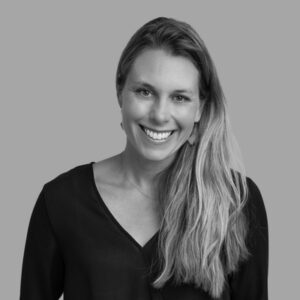
“Zero Moment of Truth” (ZMOT) is a critical moment in the PR pitching process. It’s likely a term you’ve never heard, though it should be. Zero Moment of Truth, is a Google term for when a consumer turns to the internet to research a product, service, or organization, and the resulting decision-making moment that determines their purchase. Be it for natural makeup, new hiking boots, or the best vegetarian cookbook, consumers typically turn to the internet to do their research and inform their purchasing decisions. You are probably thinking “Yeah, I research and buy things on the internet just like everyone else, but what does that have to do with PR strategy for my purpose-driven organization?” As it turns out, quite a bit.
Reporters are consumers, too
Reporters are inundated with hundreds of pitches from PR professionals each day. Just as Instagram constantly feeds you ads for products and services you might like, a reporter’s email box is perpetually filled with new pitches from experts and organizations that relate in some way to their beat.
Before the internet, reporters had to rely on mailed product samples and printed materials to learn about “undiscovered” and groundbreaking people and companies. Today, PR pros rarely send materials in the mail; the vast majority of pitches are sent via email. Instead of samples and pamphlets, journalists are given links and online references through which they can conduct their own research. As reporters begin their online research, they look for several key indicators to determine if this particular organization or product is “the one” out of the hundreds they’ve been pitched. The reporter, in this case, is the consumer of information about your organization, so how do you make sure the reporter’s ZMOT pushes them to cover your story?
What exactly are reporters looking for?
Just as you might look through several reviews on a pair of shoes to inform your purchase, a reporter is looking for key indicators to inform their coverage decision. These include online presence, following and engagement, and past coverage. Here’s a breakdown of what you need, why, and how to get there to land that coveted feature story or interview.
1. Online presence
What + Why: The first link a reporter will click from the pitch is to your website. First and foremost, as an organization or individual looking for coverage, you must have a website. It’s like the old adage, “If a tree falls in the woods…” Except in today’s terms if you don’t have a website, do you actually exist? In a reporter’s mind, no. You may be the foremost expert on women’s behavioral health, but if you can’t provide a link to your website explaining who you are, why you are credible, and what you are doing to affect change in the world, then the reporter will quickly cross you off their list.
How to get there: Your website is your first point of contact with the outside world and should boost your credibility. First, determine what you are trying to “sell” to the reporter. Are you looking for coverage on your product or your company? Then your website should provide information on who/what/where and especially why your company is so impactful, or new and noteworthy. Are you looking to promote your thought leadership as it pertains to a certain cause or topic? Then your website should be about you, your background, credentials, and should include links to articles you’ve written, video of talks you’ve given, and past interviews. Show the reporter that you are smart, have important information and a unique perspective to share and that you are the expert source they’ve been looking for.
2. Following and engagement
What + Why: After clicking through your website, the reporter will look for your social media feeds. Social media is a crucial aspect of your owned media, and an excellent opportunity to share thought leadership content, engage, and educate. It is also a key indicator, from a reporter’s perspective, on whether or not your ideas, your cause, or your service are relevant and resonate with a larger audience. If you aren’t active on at least one social channel, or you aren’t engaging with your following, the reporter might second guess your relevance.
How to get there: Long before you start pitching, you should be focused on building your social media presence. Posting regularly across multiple platforms is a must. Growing your number of followers is key. Engage with people who both agree and disagree with your point of view. Follow other thought leaders and organizations. Be an integral part of the conversation and share your voice. If a reporter can “see” your voice and presence, and understand how a larger audience engages with your ideas, then they have a better understanding of how and why you can and should be a part of their story.
3. Past coverage
What + Why: Next up on the reporter’s research to-do list is a Google search to see who else has interviewed you, and what media coverage you’ve received in the past. Past coverage is an interesting part of their ZMOT. If a search comes up empty, i.e. you haven’t received any press coverage for anything ever, then either you are “undiscovered,” which could work in your favor, or you are irrelevant. If their Google search results in tons of articles and coverage, then clearly you are relevant and someone or something of interest. But in this case, your pitch better be something new, because you’ll have a very hard time selling a reporter on a story that is “old news.”
How to get there: You can work past coverage, or lack thereof, in your favor whether you are just starting to prioritize PR, or if you’ve been at it for a while. If you’ve never received media coverage, then it will be much more important to have a strong online presence and a high level of engagement. The new voice in the room can be very intriguing to a reporter, and lack of past media coverage is okay in this instance. But, the reporter will want to see that you are relevant both with your audience and outside your audience, so you will need to really build up those other areas to capture the reporter’s interest. If you find yourself in the opposite camp, and you’ve received lots of past coverage, then you will need a strong pitch. Don’t try and sell the same tired story, say something new, do something radical, timely, or relevant.
Remember, reporters invest a lot of time and resources into each story and they are taking a risk in their choice of who/what to cover. ZMOT is critical to securing your voice or organization as the feature, and it all hinges on your online presence. If you aren’t able to clearly communicate who you are, what you do, and why it matters via your online presence, they will pass you by. Your website and social media channels should reinforce the information you’ve provided in your pitch, and support your credibility. Like the five-star review on that pair of shoes, it should solidify the reporter’s belief that you are worth their investment.
Image by Kelsey Vere from Pixabay

Diana Crawford is a seasoned public relations consultant with more than 15 years of agency, consulting, and in-house experience. She joined Orapin in 2013 and manages account services and client communications strategy development. She has worked across a variety of industries and has expertise with professional services, food/alcohol, health and wellness, lifestyle, sports, education, tech, and non-profit organizations.
